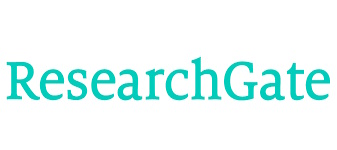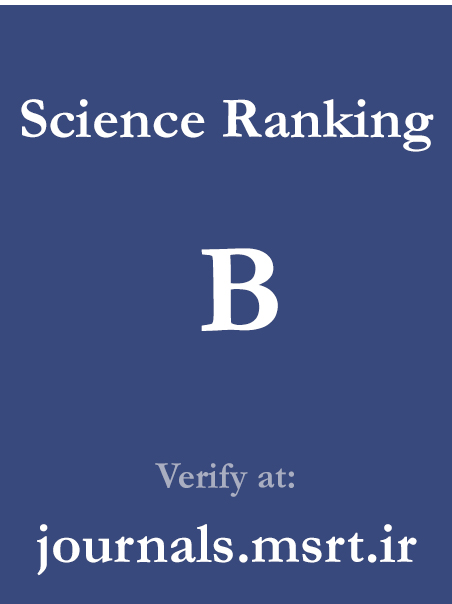A Comparative Model of External Strategic Intelligence in Public and Private Organizations in Kerman City
Keywords:
Strategic Intelligence, Exploratory Factor Analysis, Grounded Theory, Public Organizations, Private Organizations, KermanAbstract
The objective of this study is to propose a comparative model of external strategic intelligence in public and private organizations located in Kerman City. This research adopted a mixed-methods approach with a sequential exploratory design. In the qualitative phase, using grounded theory and conducting 12 semi-structured interviews with experts, the initial components and indicators of the conceptual model were identified. In the quantitative phase, exploratory factor analysis was applied to data collected from 380 questionnaires, resulting in the identification of six key factors: external environmental scanning, external information gathering, data analysis and processing, strategic exploitation, external interactions and influence, and ethical and security frameworks. These six factors collectively explained 78.4% of the total variance and demonstrated acceptable reliability (Cronbach’s alpha > 0.8). The findings indicate that effective implementation of strategic intelligence in less-developed regions requires a context-sensitive, data-driven, and flexible model capable of adapting to structural differences between the public and private sectors. The proposed model can serve as a foundation for enhancing strategic decision-making and improving organizational readiness in response to environmental changes.
Downloads
References
Barney, J. B. (2020). Firm resources and sustained competitive advantage. Strategic management journal, 17(3), 99-120. https://doi.org/10.1002/smj.425
Brynjolfsson, E., & McAfee, A. (2017). The second machine age: Work, progress, and prosperity in a time of brilliant technologies. W.W. Norton & Company. https://www.amazon.com/Strategic-Planning-Public-Nonprofit-Organizations/dp/1119071607
Bryson, J. M. (2022). Strategic planning for public and nonprofit organizations: A guide to strengthening and sustaining organizational achievement. Jossey-Bass. https://www.amazon.com/Strategic-Planning-Public-Nonprofit-Organizations/dp/1119071607
Danayi Fard, H. (2021). Change Management in Iranian Government Organizations. Tehran: Samt Publications.
Davenport, T. H., & Ronanki, R. (2024). Artificial intelligence for the real world. Harvard business review, 96(1), 34-42. http://www.ijbmer.org/uploads2024/BMER_7_584.pdf
David, F. R., Ali, P., & Mohammad, A. a. (2022). Strategic Management. Tehran: Cultural Research Office. https://pracownik.kul.pl/files/12439/public/3_David.pdf
Hakim, A., & Sohrabi Yortchi, B. (2021). Developing Strategic Capabilities Using Strategic Intelligence Capacity. Journal of Soft Power Studies, 11(24), 35-71. https://ensani.ir/fa/article/463116/
Hamel, G. (2021). Leading the revolutionPB - Harvard Business School Press. https://www.scirp.org/reference/referencespapers?referenceid=2991710
Hamuda, O. A., & Elshref, H. A. (2024). Strategic intelligence and its impact on enhancing organizational culture: A study on senior management staff at Misurata University. Kufa Journal of Economics and Administrative Sciences, 14(51), 141-160. https://doi.org/10.36322/kuey.v14i51.5947
Kazemi, M., Hosseini, S. M., & Moradi, M. (2022). Strategic Intelligence and Regional Economic Development: Challenges and Opportunities in Kerman Province. Journal of Regional Economy and Politics, 15(2), 89-108.
Li, J., Boo, S., & Tze, L. (2019). Strategic intelligence in organizations: A managerial perspective. Journal of Business Research, 102, 139-151. https://doi.org/10.1016/j.jbusres.2019.05.006
Nonaka, I., & Takeuchi, H. (1995). The knowledge-creating company: How Japanese companies create the dynamics of innovation. Oxford University Press. https://doi.org/10.1093/oso/9780195092691.001.0001
Paiuc, D., Săniuță, A., & Teacu Parincu, A. M. (2024). Strategic intelligence: A semantic leadership perspective. Journal of Intelligence Studies, 4(2), 50. https://doi.org/10.3390/jintelligence4020050 10.3390/encyclopedia4020050
Porter, M. E. (2018). Competitive strategy: Techniques for analyzing industries and competitors. Free Press. https://www.hbs.edu/faculty/Pages/item.aspx?num=195
Rinne, M. (2020). Public management reform: A comparative analysis. Oxford University Press. https://global.oup.com/academic/product/public-management-reform-9780198795186
Saleh, M. H., & Al-Hakimi, M. A. (2024). Linking strategic intelligence, strategic leadership, strategic planning, and strategic thinking and business performance: The moderating effect of strategic flexibility. Future Business Journal, 10, 31. https://doi.org/10.1007/s43621-024-00670-
Teece, D. J. (2018). Dynamic capabilities and strategic management: Organizing for innovation and growth. Oxford University Press. https://global.oup.com/academic/product/dynamic-capabilities-and-strategic-management-9780199545124
Tishegaran, M. A. U. K. M., Nashtbandi, S. S., & Yekta Yar, M. (2021). Assessment of Organizational Strategic Intelligence in the Ministry of Sport and Youth. Journal of Strategic Studies in Sport and Youth, 51IS - 2, 239-254. https://sid.ir/paper/411961/fa
Walker, D. (2022). Data-driven decision making in organizations. Wiley. https://onlinelibrary.wiley.com/doi/abs/10.1002/qre.2994
Downloads
Published
Submitted
Revised
Accepted
Issue
Section
License
Copyright (c) 2025 Havva Heydarian (Author); Abbas Babaeinejad (Corresponding author); Ali Raeispour Rajabali, Soheila Shamsadini (Author)

This work is licensed under a Creative Commons Attribution-NonCommercial 4.0 International License.







